It’s time for the first Grand Tour of the season, the Giro d’Italia. It’s a race that’s sure to attract plenty of attention in 2018, not just for the racing but because of the twin controversies of Chris Froome’s appearance, and the race’s start in Israel.
Ahead of the 101st edition of the “Corsa Rosa”, here’s your in-depth preview to the most important stages, the riders to watch, and more.
The Route
By now you’ll be aware that the 2018 Giro d’Italia starts with three stages in Israel. It’s not just the first time the Giro has ventured beyond Europe — it’s the first time any of the three Grand Tours has done so.
The race begins this Friday with a 9.7km individual time trial through the streets of Jerusalem, before two stages designed for the sprinters. The first of three rest days follows, with the whole circus flying the six-or-so-hours from Israel to Sicily — the second visit to the Mediterranean’s biggest island in as many years.

There are three stages on Sicily — two lumpy affairs with uphill sections towards the end, before the race’s first uphill finish on stage 6. Just like last year, it’s the active volcano of Mt. Etna that plays host to the stage finish, its 15km climb (average 6.5%) posing the first real challenge for the GC men.
The race joins the Italian mainland on stage 7, starting in the south and heading north towards the mountains. Stage 7 is one for the sprinters, before a pair of uphill finishes on stages 8 and 9 take the riders to their second rest day.
Stage 10 is lumpy with a flat finish, stage 11 has a tough final 5km with two ascents and a short descent, and stage 12 finishes on the Imola raceway, likely in a sprint. Stage 13, too, suits the fastmen, while stage 14 is the polar opposite — a mountain-top finish on one of Europe’s hardest climbs: Monte Zoncolan (10km at 12%, maximum of 22%).
Stage 15 is the last before the third rest day; a tough effort in the Dolomites with four categorised climbs plus 5.5km of climbing before a flat 1km to the finish.
A video showing the full course of the 2018 Giro d’Italia.
The racing resumes on stage 16 with the second and final individual time trial, a largely flat 34.2km effort. Stage 17 has a few bumps but should end in a sprint while stage 18 is mostly flat bar the 15km climb to the finish at Prato Nevoso (15km at 7%). Stage 19 is the final summit finish of the race, a stage that features four climbs including the Colle delle Finestre with its 9km of gravel. Stage 20 is mostly flat for 130km before packing 4,000m of climbing into the last 85km! There are three climbs — one 17km long, one 16km and the last 18km — the final of those peaking 2km from the finish. After this stage the riders fly down to Rome for just the third Giro finish in the Italian capital in the race’s 101-year history. It’s 10 laps of a 11.5km circuit that will round out the race, with the sprinters likely getting one final chance at glory.
THE GC BATTLE
In all, there are two individual time trials and seven stages that could be considered summit finishes to help shape the general classification (the final climb of stage 20 peaks just a few kilometres from the finish line). Stage 15 too, with its four climbs, could be decisive.
So what sort of rider does this year’s course suit? Well, it’s your typical Grand Tour contenders that will feel most at home — the riders that are excellent against the clock while also being strong in the mountains.

Froome (left) and Dumoulin (right) are both great against the clock and uphill.
It’s worth noting that both time trials are relatively flat in the grand scheme of things. This tilts the race in favour of the stronger time-trialists among the GC contenders (think Tom Dumoulin or Chris Froome), rather than those who are more at home when the road tilts up (e.g. Esteban Chaves or Fabio Aru).
But there’s plenty of time in the mountains and plenty of uphill finishes to suit the stronger climbers too. Look to the uphill finishes on stages 6, 8, 9 to provide an indication of who’s looking strong. It will then be the tough sequence of climbing days on stages 14, 15, 18, 19, 20, plus the stage 16 ITT, that should decide the race.
THE OVERALL CONTENDERS
So who are the riders most likely to challenge for the maglia rosa? The way we see it, there are six main contenders.
Tom Dumoulin (Sunweb)
Where better to start than the defending champion? Dumoulin won last year’s Giro off the back of his time-trialling and while there’s not as many kilometres against the clock this year he’s still a big favourite. The Dutchman’s climbing form continues to improve and he was able to climb well enough last year to preserve the gains he made in the ITTs (even after the cycling world’s most famous bowel movement on stage 16).
Dumoulin has been quiet so far this year, completing only 12 race days with no victories to his name (his best individual result was 12th in the Abu Dhabi Tour ITT). But don’t read too much into that — he was equally quiet last year but came to the fore when it counted.
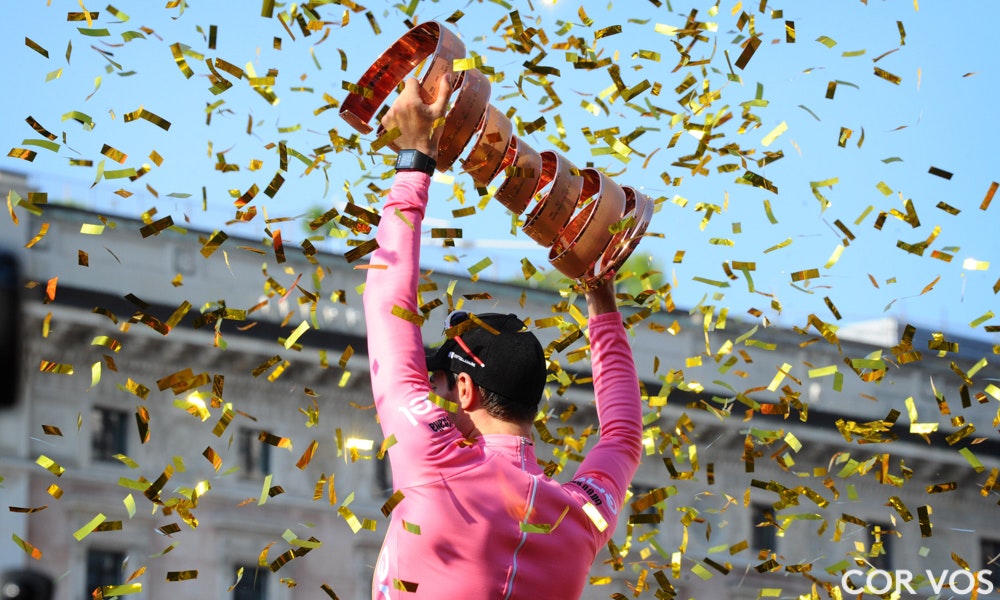
Don’t be surprised to see Dumoulin win the stage 1 time trial in Jerusalem and move straight into the lead. He probably won’t want to lead through the entire race, but it’s not beyond him.
Chris Froome (Sky)
It would be a massive understatement to say that Froome’s presence at the race is controversial. Most in the peloton (and beyond) seem to believe the four-time Tour de France champion should stay away from racing while his salbutamol case runs its course, but the rules allow Froome to race — so race he will.
Froome has been a little underwhelming so far this year — 10th at Ruta del Sol and fourth at the Tour of the Alps are his best stage race results — but that’s probably irrelevant. Froome wants to win the Giro, to become the reigning champion of all three Grand Tours, and to be the first winner of the Giro-Tour double since Marco Pantani in 1998.

In 2017, Froome became the third person to win the Tour de France and Vuelta a España in the same year, and the first since the Vuelta became the final Grand Tour of the year, in 1995. He might yet lose that Vuelta title …
Froome’s time trialling is excellent, he climbs with the best of them, and he knows how to handle the pressure of leading a Grand Tour. Many people will be hoping Froome doesn’t manage to win while under his cloud of suspicion. But it’s a very real possibility that will happen.
(Fun fact: This is only Froome’s second appearance at the Giro. His first, in 2010, came to a somewhat premature end when he was disqualified for hanging onto a police motorbike. He was reportedly going to withdraw at the next rest stop.)
Esteban Chaves & Simon Yates (Mitchelton-Scott)
Ah yes, the old “we’ve got two GC leaders” tactic. It’s a strategy that doesn’t always pay off, particularly when egos are involved, but it’s not hard to see Mitchelton-Scott making it work.
Based on past results, Chaves would seem to be the team’s best option. He was second at the 2016 Giro (his last appearance), and third at the Vuelta that same year. It seems only a matter of time before the Colombian climber will win a Grand Tour, so why not now?
His time-trialling isn’t as strong as Froome’s or Dumoulin’s, but on his day he has the capacity to climb better. He’s got a mountain-top victory already this year — on the 20km ascent to Lake Mountain at the Jayco Herald Sun Tour — but he’ll clearly face stronger opposition at the Giro.
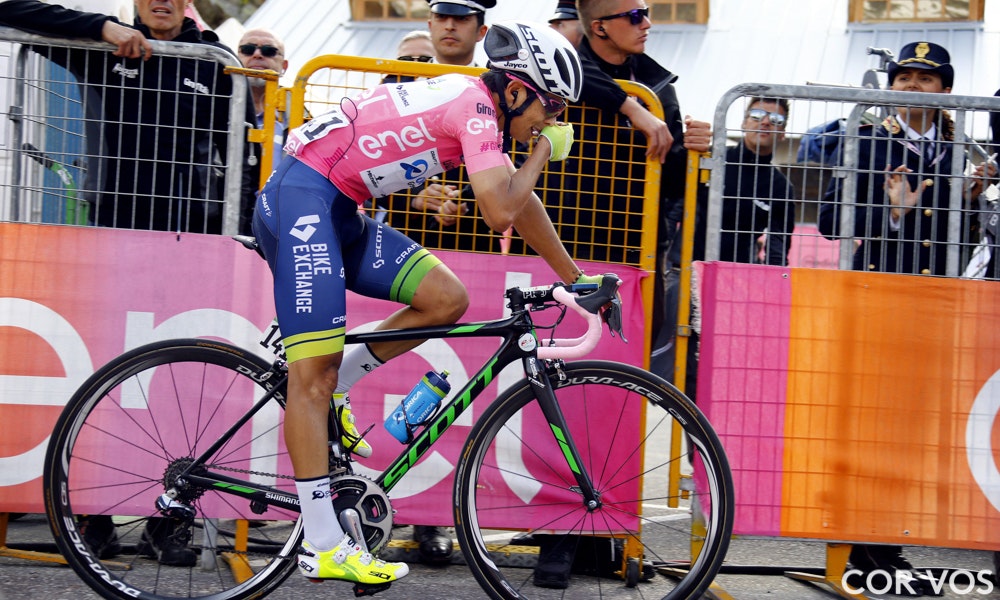
Chaves finished second at the 2016 Giro.
Yates, meanwhile, comes into his Giro debut with a seventh-place finish at the Tour de France (2017) and a sixth at the Vuelta (2016). He’s shown good form already this year, winning on an uphill finish at Paris-Nice (on his way to second overall) and soloing to victory on a lumpy stage of the Volta Catalunya (where he was fourth overall).
Expect to see Mitchelton-Scott ride in support of both riders as long as they can, until one loses a lot of time. Regardless of who ends up taking up the mantle, the Aussie squad has some great cards to play.
Fabio Aru (UAE Team Emirates)
Aru probably won’t enjoy the same level of support at UAE Team Emirates as he did at Astana, but the Italian champion is still a real contender for the overall. He’s a proven performer at Grand Tours: he won the 2015 Vuelta a España and hasn’t been far off at his home Grand Tour, finishing third in the 2014 Giro and second in 2015. Injury forced him to miss last year’s race, which started in his home region of Sardinia, and he’ll be keen for a strong showing in 2018 to make amends.

Aru has worn the leader’s pink jersey at the Giro before but hasn’t won the race overall.
Aru seems to be coming into some good form, recently finishing sixth at the Tour of the Alps. He’ll probably lose time to Dumoulin and Froome in the time trials, but look to him to be aggressive when the road tilts up.
Thibaut Pinot (Groupama-FDJ)
Pinot is another rider that’s coming into some good form in time for the Giro. He won the recent Tour of the Alps, an improvement on his second place last year which came in the lead-up to a fourth overall at the Giro.
Like Aru and the Mitchelton-Scott contenders, Pinot will almost certainly lose time to the likes of Froome and Dumoulin in the time trials but he should be one of the best in the mountains. Keep an eye on the Frenchman for sure — a real chance at the overall podium.
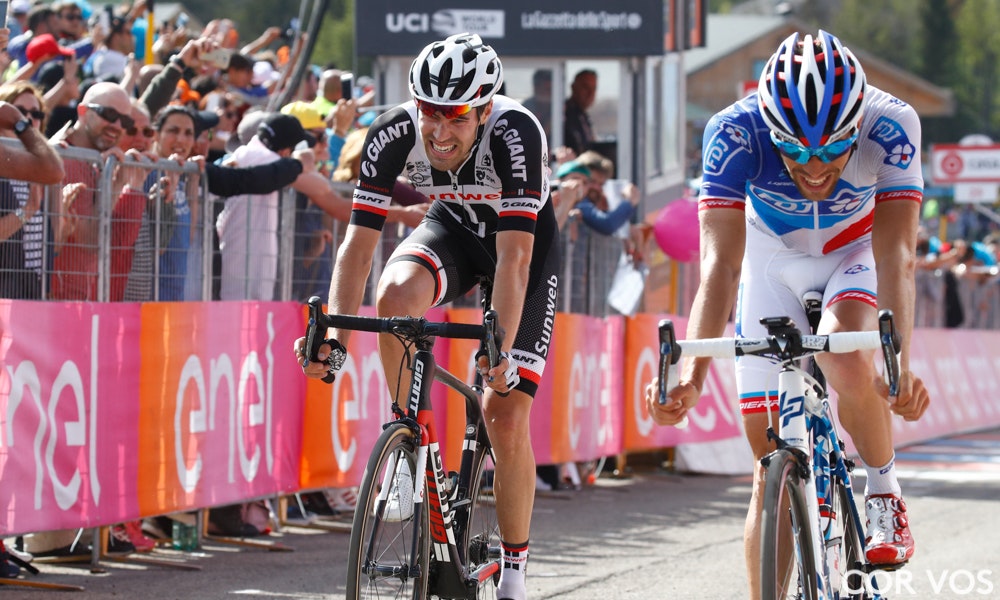
CONTENDERS FOR THE TOP 10
Beyond those that should challenge for the race overall are a handful of contenders that should be in the mix for the top 10.
Miguel Angel Lopez (Astana)
Now that Vincenzo Nibali and Fabio Aru have departed Astana, Lopez is perhaps the team’s most exciting GC prospect. He’s only finished one Grand Tour to date, finishing eighth at last year’s Vuelta, but it would be little surprise to see him feature heavily at the Giro.
He’s on good form too — he was second at the Tour of Oman (where he won the queen stage), third at the Abu Dhabi Tour (second on the queen stage) and third at Tour of the Alps. He’s got all the makings of a Grand Tour contender and it would be no surprise to see the Colombian climber in the thick of it in 2018.

Louis Meintjes (Dimension Data)
Meintjes hasn’t ridden the Giro before, but he did finish eighth at the past two Tours de France — evidence that he’s more than capable at this level. Meintjes is unlikely to outclimb the big contenders, nor will he amaze against the clock, but he’ll likely be thereabouts, staying within fighting for a place in the top 10.
Michael Woods (EF Education First-Drapac)
At 31, and in his third season as a pro, Woods is still improving. He had a breakout performance at last year’s Vuelta, finishing seventh overall, and could challenge for the top 10 at the Giro too.
The Canadian former runner brings some good form to the race: he was second at Liege-Bastogne-Liege last week and looked great. One to keep an eye on.

George Bennett (LottoNL-Jumbo)
Bennett has been around the mark at each stage race he’s done this year: he was ninth at Tirreno-Adriatico, sixth at the Volta Catalunya and fifth at the Tour of the Alps. He’s only finished the Giro once before — he was 122nd in the 2013 edition — but look to his finish at the 2016 Vuelta (10th) for a more realistic guide to what the Kiwi is capable of. If all goes well, he should finish in the top 10.
Rohan Dennis (BMC)
Dennis’ prospects at the Giro are something of an unknown. He’ll go in leading BMC’s general classification campaign but it’s not clear how well he’ll fare over the three weeks, especially in the mountains of the second and third week.
Like Dumoulin, Dennis is on a quest to convert from time trial specialist to GC contender. While Dumoulin is there already, Dennis is still more of a time-trialist, but a great one at that. He’ll be one of the riders to beat in the two time trials, and could well wear pink into stage 2.
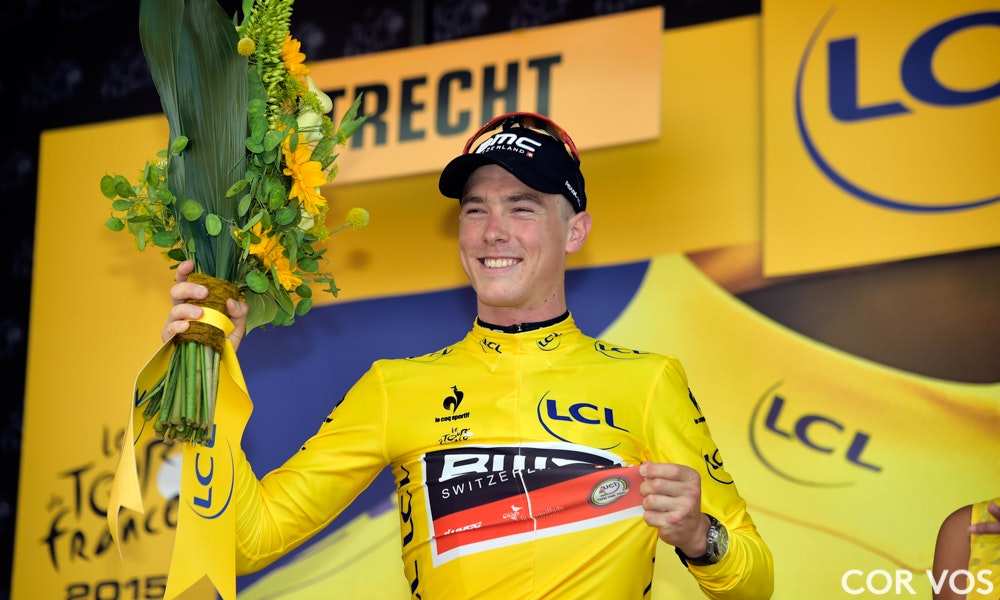
But while Dennis’ climbing isn’t as good as Dumoulin’s, it’s far from terrible. He was ninth at the Abu Dhabi Tour earlier this year, and seventh at the Tour de Romandie. If the Australian posts a good result at the Giro — top 10 is a possibility — it will likely be off the back of his time trialling. Either way, one gets the sense this Giro will be a good litmus test for Dennis in terms of how his journey to GC contender is going.
THE SPRINTERS
The Giro isn’t the sprinters’ preferred Grand Tour — the volume of climbing, particularly early in the race, make it tough going for the fast finishers. As a result there are very few of the world’s best sprinters in attendance, but that doesn’t mean the sprints at this year’s Giro won’t be hotly contested. Here are some of the contenders.
Elia Viviani (QuickStep Floors)
Viviani has had the best start to the season of any sprinter and is certainly the strongest sprinter on the starlist. Viviani and QuickStep Floors will be hoping to pick up where quadruple stage winner Fernando Gaviria left off last year.
Viviani has a bunch of wins to his name already this year: a stage win at the Tour Down Under, two and the GC at the Dubai Tour, one at the Abu Dhabi Tour and also De Panne. He’ll be the favourite any time there’s a fast finish, and will be disappointed if he doesn’t add to his stage win from 2015.
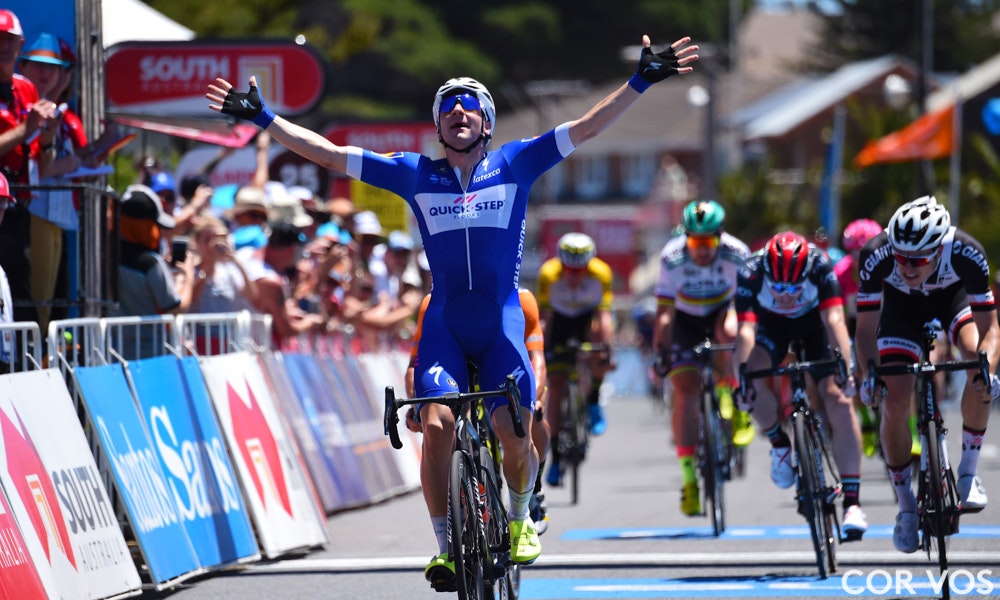
Sam Bennett (Bora-hansgrohe)
Bennett is yet to claim a Grand Tour stage victory but this year’s Giro might be his best chance yet. He went very close in his Giro debut last year with three third-place finishes and one second place. And while he hasn’t won a big race yet this year, a stage win for the Irishman wouldn’t be a surprise.
Jakub Mareczko (Wilier Triestina)
Mareczko is a rider that wins a lot of races at the lower levels of the sport; case in point his six stage wins at the 10-stage 2.2 Tour of Morocco earlier this year, or his two stages at the 2.1 Sharjah Tour. He’s yet to have a real impact at the WorldTour level, but he got close last year, finishing second behind Gaviria on two occasions. Can the 24-year-old take the next step in 2018?
Andrea Guardini (Bardiani-CSF)
Another rider with lots of wins at a lower level — 24 stage wins at the Tour de Langkawi is ridiculous — Guardini also has a Giro d’Italia stage win to his name. He took that victory in his only other appearance at the Giro, in 2012, beating Mark Cavendish no less. One to watch on the flatter days.
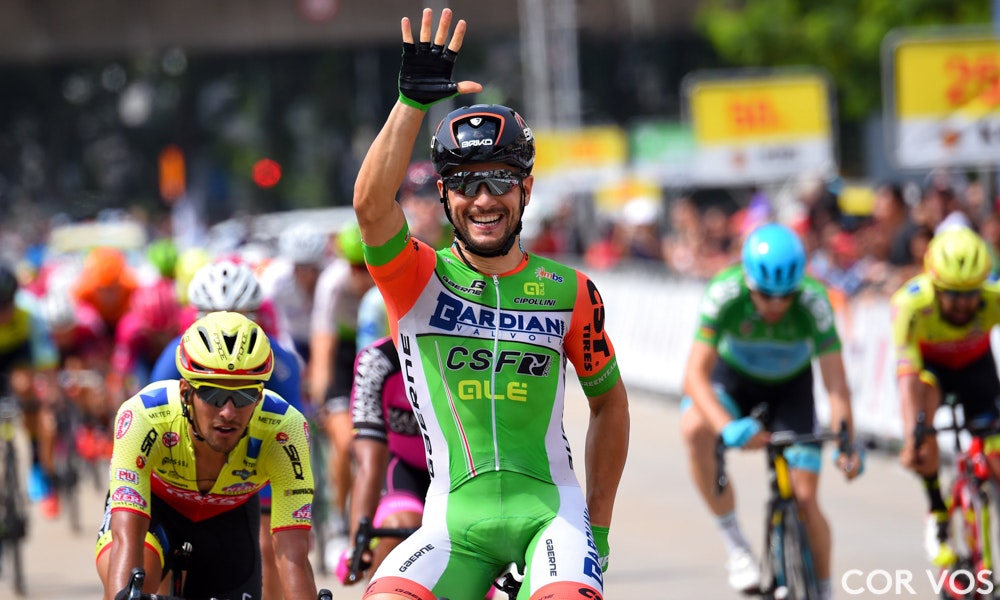
Danny van Poppel (LottoNL-Jumbo)
The Dutchman has a Vuelta stage win to his name and will be looking to add a Giro win in his first visit to the race. Van Poppel will be hoping his win at the Volta Valenciana earlier this season is a good omen and shouldn’t be underestimated in the bunch kicks.
Niccolo Bonifazio (Bahrain-Merida)
The Italian has shown some good form recently, culminating in a stage win on the opening day of the Tour of Croatia. Often around the mark, and certainly capable of a stage win in his home Grand Tour.
POTENTIAL STAGE WINNERS AND OPPORTUNISTS
Of course there’s more to a Grand Tour than the GC and the sprint stages. Throughout the three weeks there are any number of stages that could go the way of the opportunists or breakaway specialists. Here’s a selection:
Matej Mohoric (Bahrain-Merida)
The former U23 world champion is at his best when he’s breaking away late. He won a stage of the Vuelta in that fashion last year, likewise the GP Industria and Artigianato earlier this year. Dangerous.

Giovanni Visconti (Bahrain-Merida) – Another strong contender for Bahrain-Merida that loves going it alone. He’s a two-time Giro stage winner, both of which were taken solo. Look for him in the breakaways on the tough mountain stages.
Luis Leon Sanchez (Astana)
Once a GC contender in his own right, the Spanish veteran finished top 10 at the Tour and Vuelta in 2010. In recent years he’s been more dangerous from a breakaway or late escape. He won a stage of the recent Tour of the Alps solo and has had a bunch of other strong results already this year.
Diego Ulissi (UAE Team Emirates)
This six-time Giro stage winner excels on tough sprint finishes and will like the look of stages 4, 5 and 11. Should never be discounted.
Ruben Plaza (Israel Cycling Academy)
The Israel Cycling Academy will be buoyed by the race starting in their homeland but their best chance of success will come later in the race through Plaza. The Spanish veteran is a stage winner at the Vuelta and Tour and is very dangerous if he can infiltrate a breakaway in the mountains. He’s on good form too — he took an impressive solo win at the recent Vuelta Castilla y Leon which earned him overall victory in that race.

Tim Wellens (Lotto Soudal)
Speaking of riders who love going it alone, Wellens is among the world’s best at it. He won a stage of the 2016 edition in such a fashion and will be looking for his opportunities again this year.
Ben O’Connor (Dimension Data)
One of the most exciting prospects in Australian cycling, 22-year-old O’Connor earned his Grand Tour debut with a sensational solo win at the Tour of the Alps. He took a similar win at the Tour of Austria last year and while he’ll face stronger competition at the Giro, it would be a surprise not to see him up the road at some point.
Jarlinson Pantano (Trek-Segafredo)
Another dangerous rider from a breakaway in the mountains. The Colombian won a stage at the Tour in 2016 with such a move and might be tempted for an encore at the Giro.
Mads Pedersen (Trek-Segafredo)
Pedersen was a revelation at the Tour of Flanders, battling his way to a gutsy second place at just 22 years of age. He can get away on his own and he can win sprints from a small group. Exciting prospect.

Richard Carapaz (Movistar)
Movistar doesn’t have a big favourite for the race (a rarity for the Spanish super-team), so its riders might have more freedom that normal. Ecuadorian Carapaz won the Vuelta Asturias last week and is in good form. Watch for him in the hills.
Jan Polanc (UAE Team Emirates)
The Slovenian has made a name for himself with solo victories on mountaintop finishes at the Giro. He’s done that twice, including last year on Mt. Etna. Keep an eye on him if he’s still up the road late.
MUST-WATCH STAGES
We get it — it’s not possible to watch every stage of the Giro, particularly for those of us based in the Southern Hemisphere. With that in mind, here are the stages we think you should watch, to catch as much of the action as possible. And yes, they’re mostly uphill finishes:
Stage 6: The race’s first uphill finish to Mt. Etna (15km at 6.5%) and the first real indication of who’s climbing well. Plus, the scenery is impressive.
Stage 8: The second uphill finish, to Montevergine di Mercogliano (17.1km at 5%). Hopefully the GC riders come out to play.
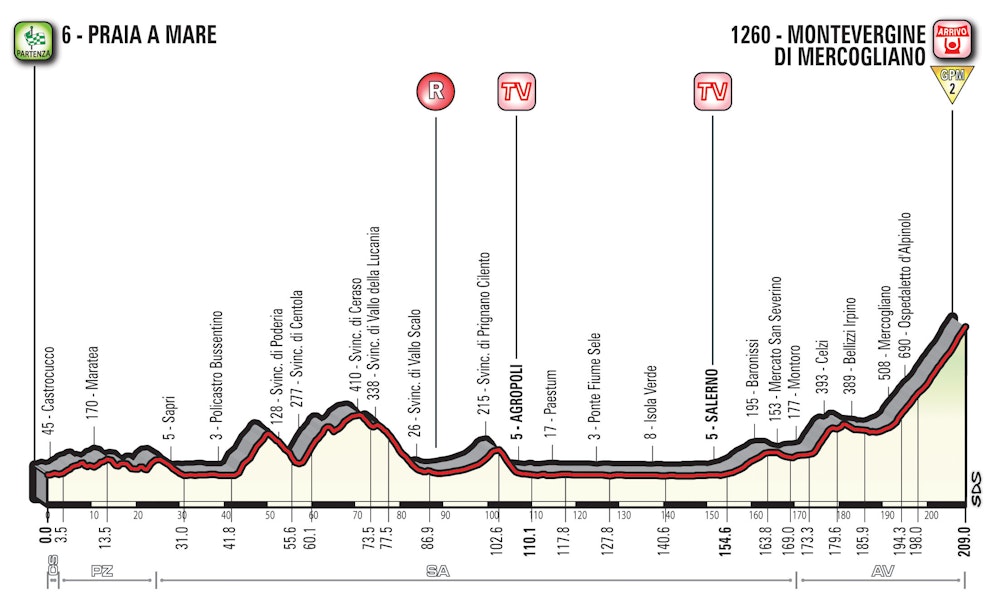
Stage 9: The second straight uphill finish and the third in four days. The last climb is a 26.5km effort which gets steeper towards the end (4.5km at 8.2%). Hopefully the GC contenders will stretch their legs here before the second rest day.
Stage 14: Monte Zoncolan, a true monster of a climb and an iconic test for the riders.

Stage 18: It’s probably safe to tune into this one as the final climb starts. It’s flat until that point but should heat up as the riders hit the 15km rise to Prato Nevoso (7% average).
Stage 19: Three words: Colle delle Finestre. This 18km ascent is half tarmac, half gravel, and all charm. This climb last featured in 2015 when Mikel Landa won the stage. It’s actually the Cima Coppi this year (highest climb of the Giro with more KOM points on offer) but doesn’t end the stage — the final ascent is a 7km effort at 9.1%. A tough day with four climbs in all.

Stage 20: Tune in to this one with 85km to go. It’s up and down from there, over three mountains. The last chance for the GC contenders to make their mark.
TV COVERAGE
The 101st Giro d’Italia will be broadcast into an impressive 198 countries courtesy of 18 different TV networks. The three stages in Israel will be broadcast live in their entirety (depending on how the various broadcasters choose to show the international feed) while the remaining stages will get 4.5 hours of live coverage.
Viewers in Australia will be without live coverage on free-to-air TV again — Eurosport via Foxtel (Channel 511) is the only official option. Eurosport will also be the place to go for viewers in Europe while Fubo.TV and Flobikes.com will have live coverage in the US and Canada.
For more information, click through to the Giro d’Italia website or check your local TV guides.
Imagery courtesy of Cor Vos
This article was originally published on cyclingtips.com





